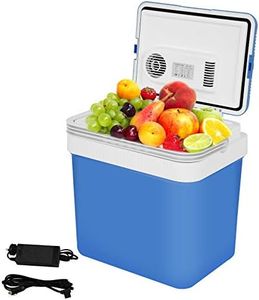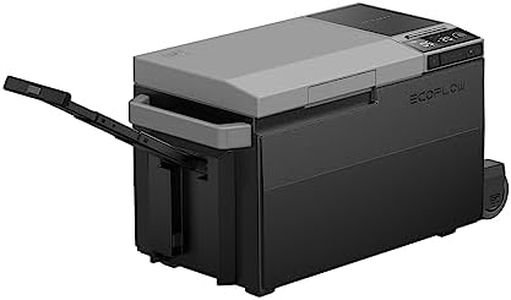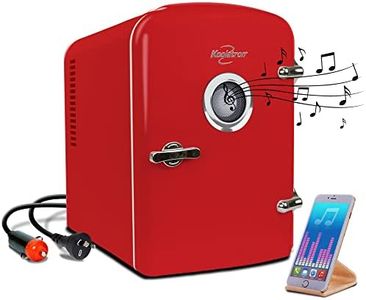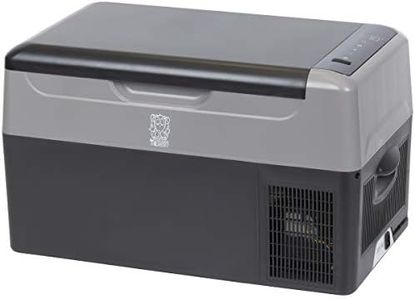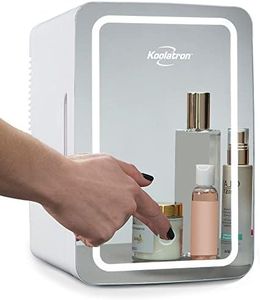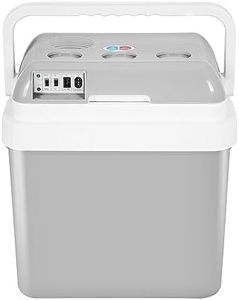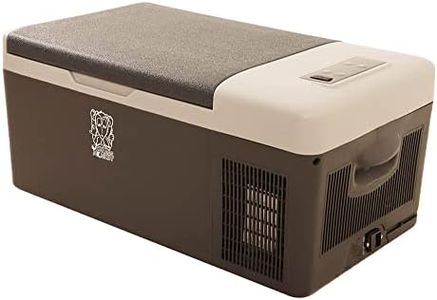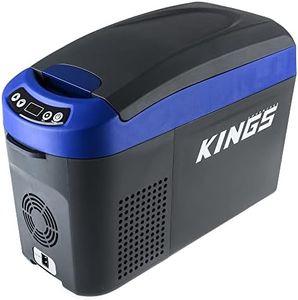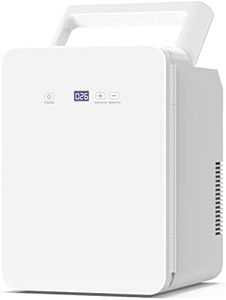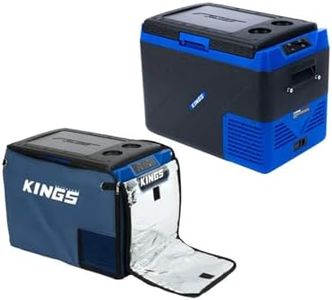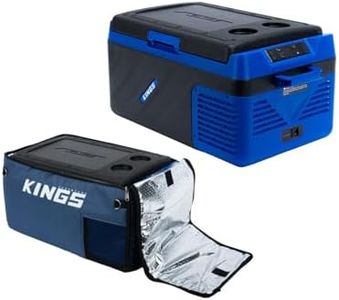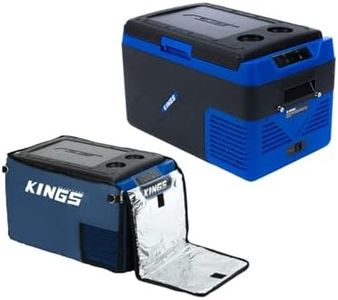We Use CookiesWe use cookies to enhance the security, performance,
functionality and for analytical and promotional activities. By continuing to browse this site you
are agreeing to our privacy policy
10 Best Plug In Coolers
From leading brands and best sellers available on the web.Buying Guide for the Best Plug In Coolers
When shopping for a plug-in cooler, it's important to understand what you need from the product: do you want to keep drinks icy cold on road trips, store perishable groceries on the go, or use it as a mini fridge for camping? Plug-in coolers are portable devices that run on electricity (via wall outlets or car adapters) to maintain a cool temperature for your food and drinks. Since they come in various shapes and with different features, focusing on your intended use will help you make the right choice. Consider how much capacity you need, how often you'll move it, and where you'll plug it in to ensure you choose a cooler that fits your lifestyle.CapacityCapacity refers to how much the cooler can hold, usually measured in liters or quarts. This is important because it determines how much food and drink you can fit inside. Small coolers (under 20 liters) are good for personal use, short trips, or a couple of drinks and snacks. Medium coolers (20–35 liters) suit small families or day outings. Large coolers (over 35 liters) are ideal for longer trips, larger groups, or those who need to store a lot. To pick the right capacity, think about how many people you'll be serving and how long you need to keep things cool.
Cooling TechnologyPlug-in coolers mainly use either thermoelectric or compressor technology. Thermoelectric coolers are lightweight, less expensive, and work quietly, but they typically cool up to 20-30°C below the outside temperature. Compressor coolers are more powerful and work like traditional fridges, keeping things colder regardless of outside heat, but they are heavier and usually cost more. Choose thermoelectric if you need something simple and portable for moderate cooling, or compressor if you need steady cold temperatures (especially in hot environments or for storing sensitive items).
Power Source OptionsPlug-in coolers can be powered by standard wall outlets (AC) or car outlets (DC, typically 12V). Some models can use both, which is handy if you plan on using the cooler both in your car and indoors. If you need flexibility, look for dual power options. Think about where you'll be using the cooler most often and pick accordingly.
Energy EfficiencyEnergy efficiency describes how much power the cooler uses to keep items cool. An energy-efficient model will consume less electricity, which is useful for long trips, camping without easy power access, or if you want to save on energy bills. Check the manufacturer's specifications or user reviews for information on power consumption—lower watts means less energy used. If you'll be running the cooler for long periods, or from a car battery, opt for a model known for being energy efficient.
Portability and WeightPortability is about how easy it is to move the cooler around. Lighter models with sturdy handles and wheels are easier to carry, especially when they're full. If you need to lift the cooler in and out of a car often, aim for a lighter one, or one with wheels. Consider the weight (including when filled), the design of the handles, and whether it will fit where you plan to store or transport it.
Temperature RangeThe temperature range indicates how cold (or sometimes warm) the cooler can get. This matters if you need to keep certain foods below a specific temperature, or if you'll be using the cooler in hot weather. Some coolers can even switch between cooling and heating functions. If you're just keeping drinks cold, a basic range is fine, but if you need precise temperatures (for things like medicine or dairy), choose a model with better control and a wider range.
Noise LevelNoise level refers to how loud the cooler is when it's running, usually measured in decibels. Some coolers can be quite noticeable, especially in quiet environments like a tent or bedroom. If you are sensitive to noise or will use the cooler in living/sleeping areas, look for a model that is designed to operate quietly, and check user reviews for real-world impressions.

